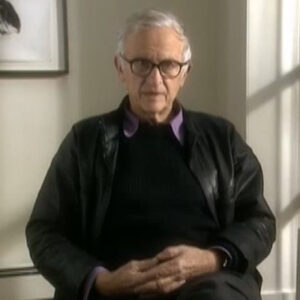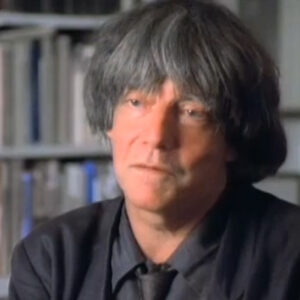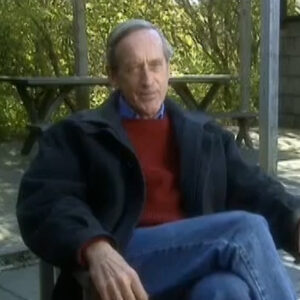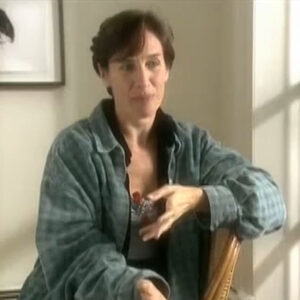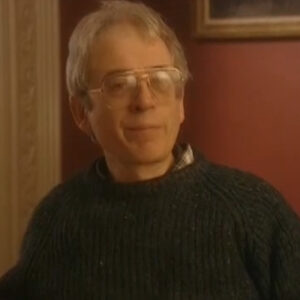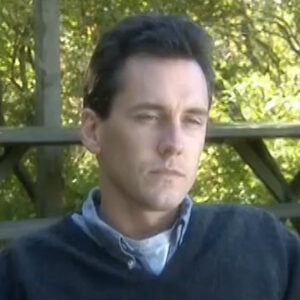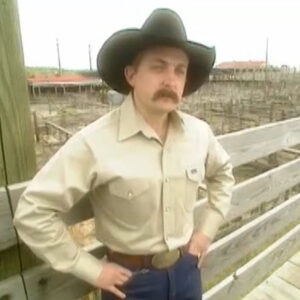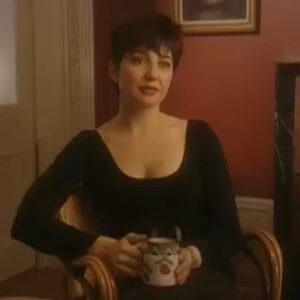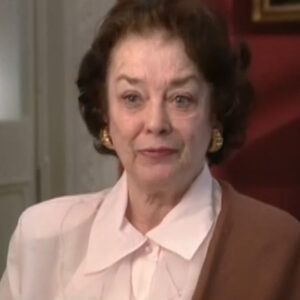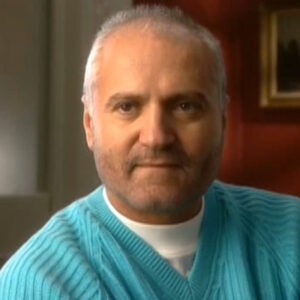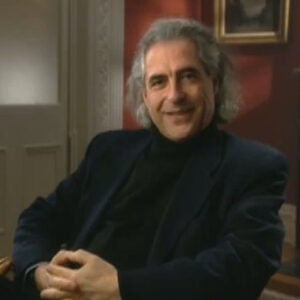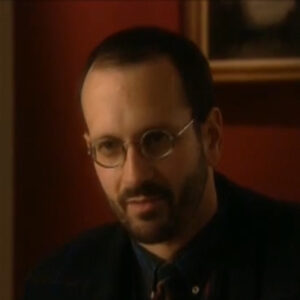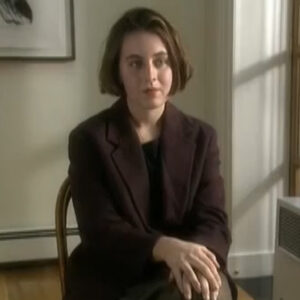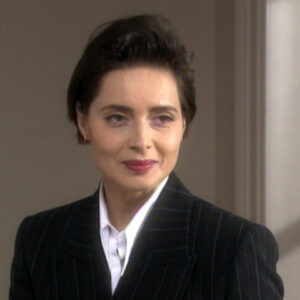Speaker Both Dick Abbadon and I have a foot or perhaps just even a toe in the fashion world. He, by his choice of work, by being by, began as a fashion photographer.
Speaker And I by having been born into it through a born into a military family media which was involved in fashion, which actually made the careers in fashion.
Speaker And I think we are both very aware of the dangers and the particular seduction of the fashion world. When I look at a picture of Abbadon with extreme details of a fashion photographer, I mean, the hair being windblown, too, out there. I can just hear the editor’s voice saying I want her hair all the way to Siberia, which is a very common feature of the fashion world. Is this gift for the exaggerated statement, the Vasey Gatorade’s statement, or how could you leave me in here and in New Delhi with only 13 shades of pink?
Speaker Said in editor with value was reported to say there’s extremely, extremely exaggerated on. Rhetoric of the fashion world. When it’s shown in his photographs, I feel it’s often shown in an ironic sense that when the hair is way out there or the wind is blowing the skirt, Abbadon is saying. I know this is not reality. If it was done that way by more conventional fashion photographer. It wouldn’t be as fun, as much fun, because you would sort of feel that the photog was taking that will very seriously. So there is that sense of metaphore and Abbadon where the extremeness of the pose, sort of the metaphor for with extremeness and all the possibility for trope in fashion photography epper, that the whole hyperbolic quality of that in photography is exaggeration is taken by him with a grain of salt.
Speaker The quality of the people remark on continually, including Penn, is that he was one of the first. I was really concerned with keeping her life of the bottle.
Speaker The anxiety, I think that has to do, I think Dick is extremely involved in the inner lives of women. And that is shown even in the inner lives of of fashion models were there in allies have been just totally overlooked or rejected. But that picture of Dorian Lee straining to look at himself itself in the mirror, in that black dress with all the ruffles and the jewelry, that terrible female anxiety before the mirror.
Speaker Is it too much? Is that enough? Is it all right? And I think that this interest in the inner lives of women, again, may come biographically from. The terror experience. Through seeing his sister and his wife.
Speaker Through very difficult moments there in Alive and many other women friends. And I think that Dick, as the ever compassionate friends friend, allows himself to get terribly involved with with other people’s problems. And since women often his best, closest friends platonically, there’s a whole gamut spectrum of female inner emotion that he’s experienced through his family and through his close women friends, which he cannot possibly shut off when he’s photographing the fashion models so that he photographs Dorian Leigh in that shot with as much empathy and compassion as you would photograph his own sister, his own wife in a difficult moment.
Speaker Are there other photographs that come to mind of models or just of women that have that?
Speaker Rich, contradictory, emotional texture of both joy and anxiety and tension, the parents face to meet the face.
Speaker Well, the photograph of Muriel Rukeyser in a quiet way is also very telling because.
Speaker She seems to be coming forward and saying, here I am quite naked, do you do with me what you will and. There is in that photograph there, they gained attention of calm and in the turmoil is a kind of threatening piece or a mask of peace over what you feel is enormous turmoil. And I think there he used this straight on. Absolutely. Symmetric and monumental pose. To show her ambivalence about how much to reveal herself and how much not to reveal. So.
Speaker A whole other range of pictures that border on the flash of. In a society like Jack. There was a crossover and he spoke at length with us. Not just the anxiety performance, but the carol of the terrors of somebody these.
Speaker How they look?
Speaker Well, I think I think there is no more terrifying life that one could experience than the life which is totally based on appear on appearances, because to be onstage throughout one’s life, throughout lunch, afternoon and dinner, as you know, he was probably for many decades of a life. To me, it’s a almost a definition of abducted in a circle of hell. And I I would think that you have to be a totally simplistic woman to endure it without some harm to your psyche. And none of the women photographed in these books are simplistic. I think that there’s a terror that you will disappear altogether if you’re not. Displayed, there’s such a insecurity there that who am I? And will I just go and vanish if I’m not perfectly displayed in the latest costume, in the latest fashion without a hair?
Speaker And is there a picture or a portrait that he’s done or a particular fashion picture, shipping DVDs that. That tries to reveal that, Tara.
Speaker I think that famous pictures like, you know, he’d been profile talking to the bartender. Hey, you know what I mean? I think that that’s the one which is very much in you if you feel that the whole act of appearance is almost empty.
Speaker The individual. And has made it kind of beautiful. Hollow statue out of that individual. I don’t think I think that there’s nothing what eroding to the psyche. Then being totally, constantly on display, I think one of the reasons why so many actors and actresses have extraordinary fragility.
Speaker Over the very fragile psychologically, is that to be a good actor or actress, you have to have a lot of in depth. And to be that much on display and have and maintain the in-depth, which we need to remain a great actor or actress must be an absolutely.
Speaker Terrifying life to go through. And in that picture, you feel all the. Brittleness of that urbane Polish, which those human beings. I cultivate and their unwillingness to face their own demons, I think is what I feel the most. And you feel you’re looking at photograph. Where is she going to wake up some day and see that? It’s all empty inside.
Speaker Sort of a large question tonight. We talked about it once before, and Dick has spent a great deal of his life photographing. Be with us for two thousand years.
Speaker Oh, I think it’s as much of an instinct, as much of a survival instinct as our need to eat and drink and keep ourselves clean.
Speaker It is absolutely I mean, to to embellish oneself and to adorn oneself is as if that is archaic and primitive and innate and immense, a appetite as hunger and the need for sleep and sex. There’s a Moffett’s passage in Lady Strauss’s book piece to speak.
Speaker Left in the same language in an English translation in which he describes a primitive tribe in South America.
Speaker In which the men are segregated for several days of the month and spend all that time exclusively enjoying themselves and each other. And they are there in a tent in the middle of the whole tribal compound with the women on the outside and inside teaching each of the meticulously with all these designs of great intense colors and making a whole kind of ritual out of it.
Speaker And emerging resplendent with them that month’s array of colors and the body paint. And that, to me, is a parable for the need for fashion in everyday life, that the need to self adornment is as deep as any other human instinct we have. And I think it’s also a great refuge from despair. And when I was researching the book and Soviet women, I realized that there’s no community of women, more fashion conscious and more coquettish. And what staff elegance and the Soviet women, because, of course, they had been deprived of any capacity to adorn their bodies for ever since the revolution. And I realized that it was not any particularly frivolous trait. The country had to do with their very psychic survival. The fact that he could put on a little lipstick in the morning when there was barely any bread to eat or put a beautiful pink bow in their daughter’s hair or have been able to get a beautiful little. Green Saturn roar from the West, bought by a friend, just lit up their psyches, psyche’s cheer them up for the entire day, for the entire week, for the entire month. And I understand that completely. If I’m living alone out in the wilds, I will need that green Saturn bra to lift my psyche.
Speaker Complexity, say, and in those beautiful pictures and all those magazines and the most beautiful ones, they. Benign or inspiring? They could be damaging as well. It.
Speaker I think we have an essential need for the superfluous. Fashion may seem superfluous, but it is. We need more than just bread and. Water to live on just would be psychically, we need poetry. So physically there is the poetry of the bodily surface, which fashion is about. Deep sense of this world is. I think Dick has a deep sense of that dual aspect of fashion, both its frivolity and its essential miss. And that’s why he is able to function. As a good fashion photographer as well as a marvelous portrait is because. He has already figured out decades ago that fashion is both superfluous and essential. And he crossed that paradox.
Speaker You’re picking up on that, just the whole question of contradictions. Who both loves Beckett and Fred Astaire. Who is an optimist? And yet deeply apocalyptic. And there are those contradictions, and I mean, if you could talk about. Your own sense of.
Speaker I don’t see. I think his dick is equally open to Beckett and Fred Astaire. And I think that’s why his it is constantly revitalized. I think all hired.
Speaker There has to be constantly revitalized by popular art, just the way Matisse was enormous fan of American jazz and even titleholders best series. One of the best series jazz. Every one of us has to. Be aware of the rhythms of church spirituals and jazz, the days of the 1950s and Elvis Presley music in order to be at our best as writers because high, quote unquote, cannot this cannot feed on itself. If you read the correspondence of the greatest writers like Flo Bayer, for instance, he’s always saying the latrines never forget the latrines.
Speaker And that, to me, symbolic that you have to be as.
Speaker Aware and as as eagerly documented, live towards latrines as towards landscape as towards. Physical beauty as towards human feelings that the whole range of spectrum of human emotions are human activities can flood into your art. So it is not so much a contradiction to me that he is equally at home with Beckett and with. Pretested. I think that’s just the same capacity for wide spectrum that Matti’s had.
Speaker The last time we talked about the way in which we discover big in his work.
Speaker In many ways, I’m writing my own autobiography. The obvious concerns and obsessions that emerge from.
Speaker It’s a need to understand. I think he has like all would be writers or. And more so than most visual artists because of his great involvement. Literature. He needs to plumb human nature, human character, the nature of human nature. He needs to plumb the historical moment. He needs to. Plumbed the workings of society, why do we leave our insane people in those kind of hovels? Why do we not set up to W8 stop stop programs for the Drifters in this country? Why? Did the Berlin Wall stay up as long as it did? And he’s involved in the historic moment expressing the urgency of the historic moment and in deepening his own understanding of human nature. And I think that’s what we’re all about. We’re into art to learn. Not to, not to. A party, the pours, what we enjoy to share wonder. But above all, I think in a very selfish way to learn for ourselves and deepen understanding. And I think he’s constantly trying to deepen his own understanding of the human condition. And that is why his art has a depth that has I think certain visual artists are content to just do beautiful decorative piece. He’s not.
Speaker It also said talked about Dick as a psychoanalyst, as a listener, as I remember. Therefore, I think we are surprised. Those four words for the. Exporting relationships.
Speaker I think in order to understand others, you have to remember everything they’ve said or every expression they’ve had on their faces and remember them remembering is by itself an act of healing. Memory is the most healing function in human nature. If you’ve had a childhood trauma, you can only figure it out by remembering it as well as you can. And using that memory to figure out what the nature of that from was and how it affected you, and then work out of the trauma through memory. And then in the same way that personal memory is, is a healing for those of us who are sick in the same way. The friend who remember specifically can become a healer just the way a great psychoanalyst has to be. All attention has to have an almost kind of a purging of self in his moments of working with the patients so that he’s all year. He is all listening and he becomes and he has to go through a whole kind of purging and abnegation of self to be that intensely the hearer and the listener. Dick has that to a great degree. I’ve never known him to forget an inflection in my voice, even in the conversation we’ve had 20 years ago. And I think this is part of the learning process, which is his approach to art that he can only understand. He’s so eager to understand human beings that he remembers everything about them. And in general, I think there’s nothing more rural and more stupefying to culture and to individual life than the act of forgetting people who wound just the most are the ones who forget about our needs or forget events in our own lives. And the faculty of memory and of remembrance is the faculty, which the great shaman’s is about, both to have perfect memory. So the great healers have that ideal memory, which we could say in theological terms. God is pure memory. If you’re listening, you’re hearing pure retention. And we should all if we are going to be compassionate people and by a law of compassion, which I think Dick does in his daily life. And it’s like it’s a friend. It’s a family person. We have to try and attain that ideal state of the perfect hero, the perfect listener, the perfect remember.
Speaker I think a big question for all of us is always, who am I? And that’s a big that’s a big question for the doctor. Who really is he or she this person sitting in front of me and nobody knows who they are. I think only God might know who you are. But one could define Grace, perhaps as getting as close to possible is what we really are in the mind of God. And the great portraitist Rembrandt Go of Alaska is have a kind of luminous brutality in the way they picture human beings, which give the essence or come as close as possible to giving the essence of that human being. And then and Abbadon have that to an equal degree, I think, is to give the psychological depth of the kind that, lets say Abbadon gives to that Shanelle the whole brutal and hysterical and pushy and brilliant side of Shanelle, or to that anguish look on Brodsky’s face when he the way that anguish look, he has, especially in a crowd on that amazing photograph of recent one by Bellin, which is particularly interesting because he had what does he bring into that? This is where photography becomes so autobiographical. Abdon brings into that photograph the impact that Berlins book The Hedgehog and the Fox has had on him for the past four decades, since he’s read it first in the 20s. He brings into it the impact of the kind of message expressive the hedgehog and the fox, which is essentially there may not be any utopia. But I’m going to work for it, even though it’s a losing battle, because that’s the only way to survive with grace and low incomes.
Speaker But then with all that baggage that he’s brought through his text into evidence mine and then the way of it until that to me, he starts man starts cracking Jewish jokes and giving social gossip. And Abbadon has to totally revolutionize the way that the lightning not for the city, because it’s that whole kind of light, buoyant riddle and sort of saloma side social side to Berlin, which he wants to bring in. Having discovered that upon meeting a human being for the first time and setting backdrop lights, everything has to be changed.
Speaker And I think that’s the kind of transformation and sudden judgment which only a wonderful photographer can have.
Speaker Yes, the Brodsky picture is very interesting. This is where he becomes with the abdon becomes a kind of psychological painter. When he was photographing Brodsky, he wanted him in a crowd. And the city had been very hard to achieve. The datastream had been broken many times. And as they met, he was very rushed and refused to go down to Penn Station, which is where I don’t want to to photograph him. And so I did get some of these very brooding single headshots of Watsky, but he was determined to paint him into a kind of crowd scene.
Speaker So we went down to Penn Station with his camera and shot into the crowd and then came back to the studio and collaged that woman on the right and that woman on the left into the picture. Curacy Brodsky, according to everyone, was very pleased with that shot. But this is how in his late period, I think this is something which. Going like Warren and dodge the traffic.
Speaker Some Bosky poet of Joseph Brodsky, the poet of an enormous period in the suffering of humanity through having been jailed under the Soviet regime for so many years. Something about the suffering in his life history and something about the suffering in his poetry, which Abbadon wanted when he wanted to have the image of the man’s face in a crowd. That was his concept of showing Brodsky the witness to suffering in a crowd. And the only way he could do it was since Bosky refused to go down and be in a crowd for the photograph. He Abdon went to Penn Station, photographed shot, diminish ships in the crowd in a very quiet way, I would imagine, and rather catch people in some way. And then came back to studio and collaged as people and to a photograph with Brodsky and some. Prosky apparently loved like that photograph very much to the museum. He’d refused to conceive of it the way Abbadon had conceived of it, but he was happy with the finished product.
Speaker The Berlin Wall, what is that? Well, about.
Speaker Well, I think there is, again, trying to, like any good artists, deny the apparent euphoria of the moment. There was there was the Berlin Wall going down and the enormous partying and and the flares and the drinking and the hullabaloo when the celebration. And what he’s saying with those photographs is I refuse to take this as a utopian celebration of the golden future, which is what everybody or the other media we’re making it out to be. There is going to be a lot of suffering ahead. It’s going to be a lot of readjustment.
Speaker The human condition is such that utopia just does not appear because a wall is broken, because a nation is redesigned. This brings all kinds of new complexities, a kind of new kinds of tragedies and new levels of suffering, perhaps even into the history of that people. And that’s Abbadon, the pessimist, the utopian pessimist, I would say, talking with saying we have to celebrate, but let’s not forget ever that the celebration must be always mixed with caution and with irony and with a very guarded optimism towards a future.
Speaker I think it’s because there may be many reasons for it, but I think the reason that interest me the most is the fact that he has been eager and willing and trying to to break through the boundaries of law and form that he is doing kind of poetic or lyrical reportage or that he is doing reportorial fashion photography. All these I hybridize constantly, especially in the last 20 years, striving for hybrid forms. And the public is very philistine, the public. And I would define Philistinism as the pleasure of the already seen contentment with the already seen contentment with what is familiar and hackneyed and already expressed and evident, is always trying for a new format, for some kind of new disjunction, which is always avoiding the tyranny of the already seen.
Speaker And I think those kind of experiments are very good, very hard for him to be pigeonholed by his public just the way he is a psychologist in his photographs and a budding fashion photographer. Those two qualities have not often merged and.
Speaker People would like to categorize them as a social photographer or as a fashion photographer was a reportage photographer in the camp. He’s constantly sort of slipping in and out of these categories. And that makes the pigeonholing very difficult. And I think, ah, the audiences need to control the artist results in the eagerness to categorize them. It’s a form for the audience to control this of the evanescent and sometimes very rebellious drives of any particular artist.
Speaker Because my question will be taken.
Speaker So I just want to finish that thought. What he goes by. Counteraccusations, what upsets people and why there is so much funding for crews of whatever. All I’m saying is that.
Speaker Oh, I just needed to say that the reason he so there’s been a lot of criticism of other Don’s work ever since that big retrospective at the Whitney. And I don’t know what it’s all about. I just pick out one feature which interests me. Which is something I feel strongly about. All the odds is that the public is always trying to control the artist by pigeonholing her or him.
Speaker They always want to do what you know, what they’re what school you’re from, whether your ethnic expressionist or whether you are a minimalist or and if you have woven in and out of movies and woven in and out of Sean’s like a wonderful fish in deep foro, which is, as Abbadon has, and offered all kinds of hybrid seans which meld and weld reportage and fashion photography and the psychological portrait. People will say, what? What is it? The public is very philistine. The public and to be a philistine, I think the essence of it is the needy, the love of the submenu, an already often seen and the shock of the of the uncategorizable is always very difficult, difficult for the for the philistine viewer.
Speaker And I think nine percent of our viewers, readers are very philistine.
Speaker Yes, he likes to make a kind of dramatic and ritualistic event out of small life details and the manual details. Once when he was staying with us in Nantucket about fifteen years ago, he took us to the fanciest restaurant on the island and we ordered a soufflé on you. The very beginning of the meals. We sat down and then an hour later we finished our main course. We waited for the souffle would be 50 minutes, 20 minutes, half an hour. And after about 40 minutes, Dick said, Okay, family, we asked for it three times, not coming. Let’s make a grand exit. And he rose and dragged us by our hands. We’d never, ever dare do that, you know. And he said, I’m going to go. We’ve got to go out and not pay the bill. And we found out our heads held very high. And as we drove home, he said I’d go back, I’ll go back and pay the bill tomorrow. I just would not stand this kind of nonsense. And my children have been very confused in the sense as to whether it was right or proper improper to do that, kind of to make that kind of a scene. But he enjoyed every second of it because there he was playing the Lord. And at the same time giving a lesson in we’re not going to be pushed around and I don’t want any of us to be pushed around.
Speaker They caught up with him and he didn’t have to drive over and offer to pay the bill, which he was going to. But it just remained kind of wonderful family story that we go back and caressed. We’d never be together.
Speaker There’s no there’s no other.
Speaker There’s nothing else except that he left.
Speaker I always feel his great, great joy in familial rituals. I mean, to cook a good meal for Dick and to sit and have it on a very cold winter day after a long walk in the snow. Is this the kind of depth of satisfaction that you feel in him at being in reading clothes into a tribal family setting, which makes you feel how deep is need for family is? And this is, I think, blended or mixed with that sense of isolation. He feels that himself. This is, to me, the most curious thing about Abbadon is that we all think of him as such a social being. He’s so apparently at ease himself. He’s such a wonderful raconteur. He’s always looked so wonderful and so poised. And his friendships are so intense and varied. And yet, if you talk to him about what his deepest terrors or what his conception of himself is, he will tell you that he feels he’s the most isolated person in the world. This is to me, so strange that this man, who is apparently so integrated, so deeply bonded in his family life and in his friendships, has the sense of terror about himself being so isolated. And I think that’s where this sense of isolation projects so well into documenting crowds and elegant crowds who constantly are being seen in groups like the photograph of the Volpi ball in which people are supposed to be having a wonderful time together. And yet you feel this tragic isolation of every human being under this veneer of social get together on the highest level of aristocratic European society. The tragic isolation of those faces is perhaps a projection of evidence, own deep sense of isolation, which is so completely at odds with our view of him as a social, gregarious human being.
Speaker I wouldn’t know about that. No, I can’t talk about that.
Speaker Well, I think that’s also to do with a bit of the dissatisfaction myself. That is always has to go on an experiment, a new form, and push himself towards a new direction because of the constant dissatisfaction.
Speaker But I think in your own good old.
Speaker This is a sign of things to do, the two of you together. It’s a serious line in this life.
Speaker A political activism.
Speaker Well, yeah, I mean, I think another thing that drew us together in the late 60s and early 70s is that we were not we were the opposite actually of the radical chic fashion people, fashionable people talking about anti-war causes that he did as great a dosage of going back and forth to physically attend demonstrations as any committed activist and willingness to, let’s say, to be arrested. These, of course, insignificant and almost humiliating and insignificant details when we compare them to what led to the huge amount of freedom that the real core of the anti-war resistance, like the Americans offered to the world. But still compared to the salon radicals who just talk, talk, talk and do not act. It is kind of refreshing. And these these activities were not radical chic. They involved actually very hardcore people who had been committed for decades, like Grace Feili and Dr. Spock and Noam Chomsky and the scientists Jerry Ward and Joe Papp. This was the hardcore of the kind of demonstration that we went to and I attended and got in trouble for it. And so there is he never just talks. He acts. He will send as much money as he can or he will will take the train to attend a kind of demonstration or even put his freedom on the line for overnight, which is humiliatingly small, but still better than the central radical. Just talk, talk, talk.


